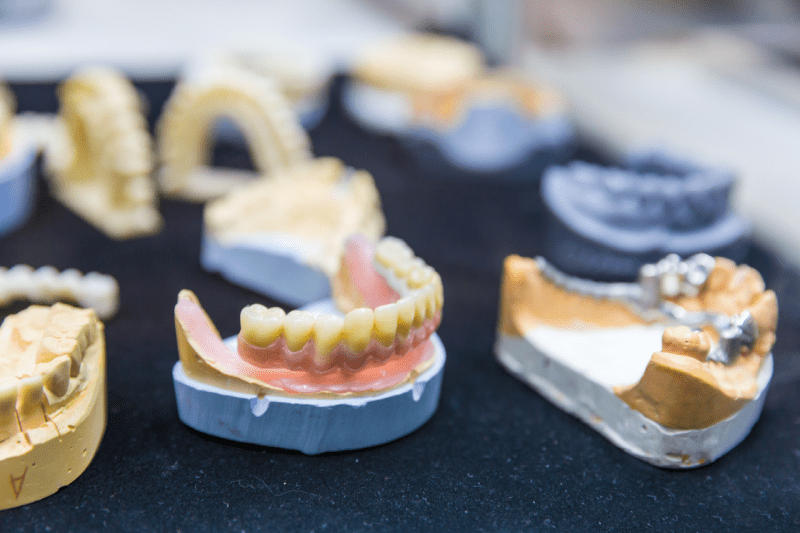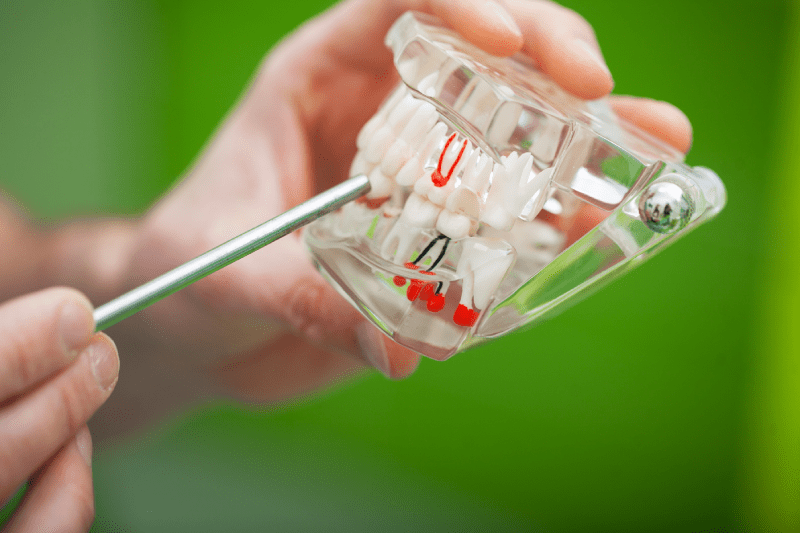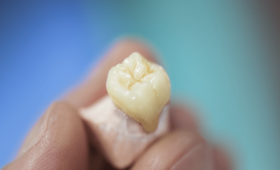Composite Veneers vs. Composite Bonding Differences
Composite veneers and composite bonding are minimally invasive aesthetic dentistry applications. Although both are made from the same main material (composite resin), they show significant differences in terms of their application, scope, and results. This content answers 35 frequently asked questions explaining the fundamental distinctions, advantages, disadvantages, and in which situations each treatment should be preferred.
What is Composite Bonding?
Composite bonding is a minimally invasive aesthetic procedure used to correct minor dental imperfections. The dentist applies a tooth-colored composite resin directly to the tooth’s surface, shapes it, and hardens it with a special light. This method is generally preferred for repairing small cracks, chips, gaps, or stains on a single tooth. The procedure affects the natural structure of the tooth minimally, offering fast and effective results. These small touches to only a part of the tooth help protect the patient’s oral health while providing an aesthetic appearance and boosting their self-confidence.
What is a Composite Veneer?
A composite veneer is an application where composite bonding material is used to cover the entire front surface of a tooth. This treatment is ideal for addressing aesthetic issues in one or more teeth and for a more comprehensive smile design. Composite veneers can significantly change the shape, size, and color of the teeth. The dentist applies layers of composite resin to each tooth to give the entire tooth a new aesthetic look. This method is an excellent choice for patients seeking a more dramatic and harmonious change in their smile line and provides a more holistic aesthetic result.
The Main Difference Is The Scope Of The Composite Resin
Both treatments use composite resin, but the main difference between them is how much of the tooth the material covers. Composite bonding repairs only a specific part of the tooth (for example, a chip or a small gap), while composite veneers cover the entire front surface of the tooth. This allows composite veneers to make bigger aesthetic changes. Bonding takes a more conservative approach by targeting only the flawed area, while veneers perform broader aesthetic adjustments to harmonize the overall smile.
How Are The Costs Compared?
Generally, composite bonding is more affordable than composite veneers. The main reason for this is that the bonding procedure requires less material and can be completed in a shorter amount of time. Composite veneers have a higher cost because they cover a larger area of the tooth and require more artistic skill. However, both are more economical than porcelain veneers. Composite veneers offer a cost-effective solution for a comprehensive smile makeover, while bonding is an ideal choice for those on a small budget who want quick results.
Which Is More Durable And Lasts Longer?
Since composite veneers and composite bonding are made from the same material, their durability is similar. However, composite veneers can offer a more robust structure because they cover the entire tooth. In general, composite resin applications are less durable than porcelain veneers and typically last an average of 5-7 years. This period can vary depending on oral hygiene, eating habits, and regular check-ups. The meticulous work of an experienced dentist using quality materials can extend the life of both applications.
How Long Does The Treatment Take?
Composite bonding treatment is usually completed in a single appointment. The average time per tooth is between 30 minutes to 1 hour. A composite veneer application, if done for the entire mouth, can take several hours or be spread over a few appointments. This speed makes both composite bonding and composite veneers appealing for those who want quick results. Composite applications are a much more practical option for urgent aesthetic needs compared to porcelain veneers, which require a lab process.
In What Case Should Composite Bonding Be Chosen?
Composite bonding is an excellent option when you want to correct minor aesthetic imperfections on your teeth. For example, it is ideal for repairing a small tooth chip, closing a tiny gap between two teeth, or slightly changing the shape of a tooth. Your dentist can achieve impressive results with minimal intervention using bonding. Bonding offers an aesthetic smile with the least possible intervention to your natural tooth, while also helping you stick to your budget.

In What Case Should Composite Veneers Be Chosen?
Composite veneers should be preferred when you want to make a more comprehensive change to your smile. If you have multiple teeth with color discrepancies, misshapen teeth, wear, or alignment issues, composite veneers offer a more holistic solution. This application provides an aesthetic makeover to all your front teeth, resulting in a more harmonious and bright smile. It is an ideal method when multiple teeth need to be treated at once for significant aesthetic transformations, such as a “Hollywood smile.”
Is The Appearance Of The Two Different?
Both methods can be applied to match the natural tooth color, but composite veneers can provide a smoother and more uniform aesthetic appearance because they are applied to the entire surface of the tooth and allow for more shaping. When done by an experienced dentist, both composite bonding and composite veneers give results that are indistinguishable from natural teeth. The translucency and shine of the composite material allow for a result that is very close to natural tooth enamel.
Are The Teeth Shaved?
For composite bonding, the tooth surface is minimally or not shaved at all. The surface is only roughened to ensure the bonding material adheres. For composite veneers, a minimal preparation may be necessary since the entire tooth is covered, but this amount is much less than for porcelain veneers. This minimal shaving helps preserve the natural structure of the tooth and contributes to the reversibility of the treatment.
Is The Treatment Reversible?
Since composite bonding involves very little change to the natural structure of the tooth, it is a reversible procedure. The material can be easily removed from the tooth. Composite veneers, requiring minimal shaving, are also reversible, and the tooth can be restored to its original condition if desired. This feature is a significant advantage for patients, as it protects their teeth for future potential changes or treatments.
Do Composite Applications Strengthen Teeth?
Yes, composite bonding and composite veneers strengthen teeth. The resin applied to the tooth surface provides an additional layer of support. This acts as an extra layer of protection, especially for chipped or worn teeth, helping them become more durable. This way, you achieve an aesthetic appearance while preserving the structural integrity of the tooth, which contributes to the tooth’s long-term health.
What Materials Are Used?
Both treatments use a tooth-colored filling material called composite resin. This material has a consistency that allows the dentist to manipulate it and is hardened with a special light to permanently adhere to the tooth. The modern composite resins used today offer much more durable and aesthetic results than older materials and create a perfect appearance that blends with the natural tooth structure.
Do Composite Applications Stain?
Composite resin is more prone to staining compared to porcelain veneers. Habits like drinking coffee, tea, red wine, or smoking can cause the composite material to change color over time. Therefore, regular cleaning and maintenance are important after a composite application. To prevent this staining, it is necessary to limit the consumption of staining foods and beverages and pay extra attention to oral hygiene.
Can Composite Applications Fix Chips?
Yes, both composite bonding and composite veneers can be used to repair chips in the teeth. The size and location of the chip determine which method is more suitable. Small chips can be easily fixed with bonding, while veneers may be a better solution for more significant damage. When chips are treated, the aesthetic and functional integrity of the tooth are restored, allowing patients to chew and smile more comfortably.
How Can The Lifespan Of Composite Applications Be Extended?
Good oral hygiene is essential to extend the life of composite applications. Regular brushing, flossing, and visiting the dentist for check-ups every six months are important. It is also crucial to avoid biting hard foods and to take precautions against habits like teeth grinding. During regular check-ups, your dentist can polish the veneers and perform minor repairs to extend their lifespan.
Are Composite Applications Painful?
No, composite bonding and composite veneer applications are generally painless. Since there is minimal change to the tooth’s structure, anesthesia may not even be needed. Local anesthesia can be used for patients with sensitivity. Any mild soreness experienced after the procedure usually subsides within a few days, making the treatment a comfortable and stress-free experience.
How Long Does It Take For Composite Treatments To Be Completed?
Most composite bonding and composite veneer treatments can be completed in a single appointment. This means patients do not need to travel multiple times for their treatment, and the process is completed quickly. This speed is a significant advantage, especially for patients traveling from abroad, as it allows them to use their time most efficiently for treatment.
How Should I Choose A Clinic?
When choosing a clinic, you should look for an experienced and specialized dentist in this field. The clinic’s hygiene standards, the quality of materials used, and patient reviews are also important. Choosing a clinic that offers transparent pricing and a detailed treatment plan is crucial for a safe experience. Additionally, the extra services provided by the clinic (such as accommodation and transfers) can be a deciding factor.
What Should Be Considered After A Composite Treatment?
After the treatment, it is important to avoid hard foods and beverages for the first few hours to allow the composite material to harden and set. Also, the consumption of staining substances like cigarettes, coffee, and tea should be limited for the first 48 hours. Paying attention to tooth brushing and flossing extends the life of the material. Following these simple rules will help you maintain the aesthetics and durability of your veneers.
What Is The Difference Between Composite Applications And Porcelain?
Composite applications are treatments that are shaped directly in the mouth by the dentist. Porcelain veneers, on the other hand, are specially fabricated in a lab and then bonded to the tooth. Porcelain is more durable, stain-resistant, and long-lasting than composite, but it is also more expensive and may require more shaving of the tooth. Your choice will depend on your budget and aesthetic expectations.
In What Cases Are Composite Veneers Not Preferred?
Composite veneers are not preferred in cases of severe crookedness, large tooth gaps, or advanced tooth wear. In such situations, more comprehensive solutions like porcelain veneers or orthodontic treatment may be more effective. Also, for individuals with habits like bruxism (teeth grinding), composite materials can be easily damaged. Therefore, it is very important to have a detailed consultation with your dentist before the treatment.
Are Composite Applications Suitable For Smile Design?
Yes, composite applications are frequently used for smile design. The dentist can use composite bonding or composite veneers to change the color, size, and shape of the teeth to create the patient’s desired aesthetic smile. This offers both a quick and economical solution. It is an excellent option for improving the general appearance of the teeth and achieving a more symmetrical smile line.

Do Composite Applications Cause Tooth Sensitivity?
Composite applications rarely cause tooth sensitivity because the tooth enamel is shaved minimally or not at all. Any mild sensitivity experienced after the procedure usually disappears within a few days. This minimally invasive approach allows for aesthetic improvements without harming the tooth’s nerve tissue. If you experience persistent sensitivity, you should consult your dentist.
Can Bonding Be Done On A Single Tooth Only?
Yes, if there is an aesthetic issue with only one tooth, bonding can be applied to that tooth alone. This allows for the correction of only the problematic area without touching other healthy teeth. This conservative approach helps preserve the natural structure of the tooth while providing a quick and effective solution to an aesthetic problem, thereby improving your entire smile.
Can Composite Applications Be Used With Teeth Whitening?
Yes, teeth whitening can be done before composite applications. However, the composite material is not affected by the whitening process. Therefore, your natural teeth should first be whitened to your desired level, and then the composite color should be chosen accordingly. This sequence ensures that your entire smile has an even and natural tone, resulting in a more harmonious aesthetic outcome.
How Is The Difference Between Composite Bonding And Composite Veneer Understood?
It is difficult for an untrained eye to tell the difference. The dentist uses bonding more for repairs, while they use veneers more for a comprehensive aesthetic change. Since both are made from the same material, it can be hard to visually distinguish them. However, after the treatment, the composite material will be on only a part of the bonded tooth, while it will be on the entire front surface of the veneered tooth.
Which Method Is The Most Preferred?
Both composite bonding and composite veneers are preferred depending on the patient’s needs. Bonding is more popular for minor issues, while veneers are more popular for comprehensive smile designs. Both methods have advantages and disadvantages, and the choice is determined by the dentist based on the patient’s expectations, budget, and the current condition of their teeth. Cure Holiday can help you make this decision.
How Much Do Composite Applications Cost?
Prices can be determined per tooth or for the entire mouth. Bonding is usually priced per tooth and is lower. Veneers have a higher cost because they require more labor and material. Composite applications offer a more economical option compared to porcelain veneers and are a budget-friendly alternative for patients.
Do Composite Applications Relieve Tooth Pain?
Composite applications do not relieve tooth pain. Pain is an indication of an underlying problem like decay or infection. These problems must be treated first. The veneer only provides an aesthetic repair to the outer surface and does not eliminate the root cause of the pain. Therefore, in case of any pain, it is important to first consult a dentist and find the cause of the pain.
Does Smoking Affect Composite Applications?
Yes, smoking can cause composite materials to yellow and stain. This leads to a faster deterioration of the aesthetic appearance. The tar and nicotine in cigarette smoke penetrate the porous structure of the composite resin, causing permanent stains. To preserve the whiteness and shine of your veneers in the long run, it is advisable to quit or limit smoking.
Do Composite Applications Feel Like Natural Teeth?
Yes, composite applications look and feel just like natural teeth. Their surfaces are smooth and feel similar to natural tooth tissue when touched. This natural feel ensures that patients do not feel any difference in chewing, speaking, and daily oral functions. You may only experience a brief adjustment period lasting a few days.
Do Composite Veneers Require Special Care?
No, composite veneers do not require special care. Following normal oral hygiene rules is sufficient. You should brush your teeth twice a day, floss daily, and visit the dentist for regular check-ups. This routine extends the life of your veneers and protects their aesthetic appearance. Your dentist can also polish your veneers during periodic check-ups.
Which Treatment Provides Faster Results?
Composite bonding is the fastest method to provide results, as it is generally used for small changes on a single tooth. It can be completed in a single appointment. Composite veneers can take longer if applied to all front teeth, but they are still faster than porcelain veneers.
Contact Cure Holiday to find the right treatment plan to beautify your smile.



